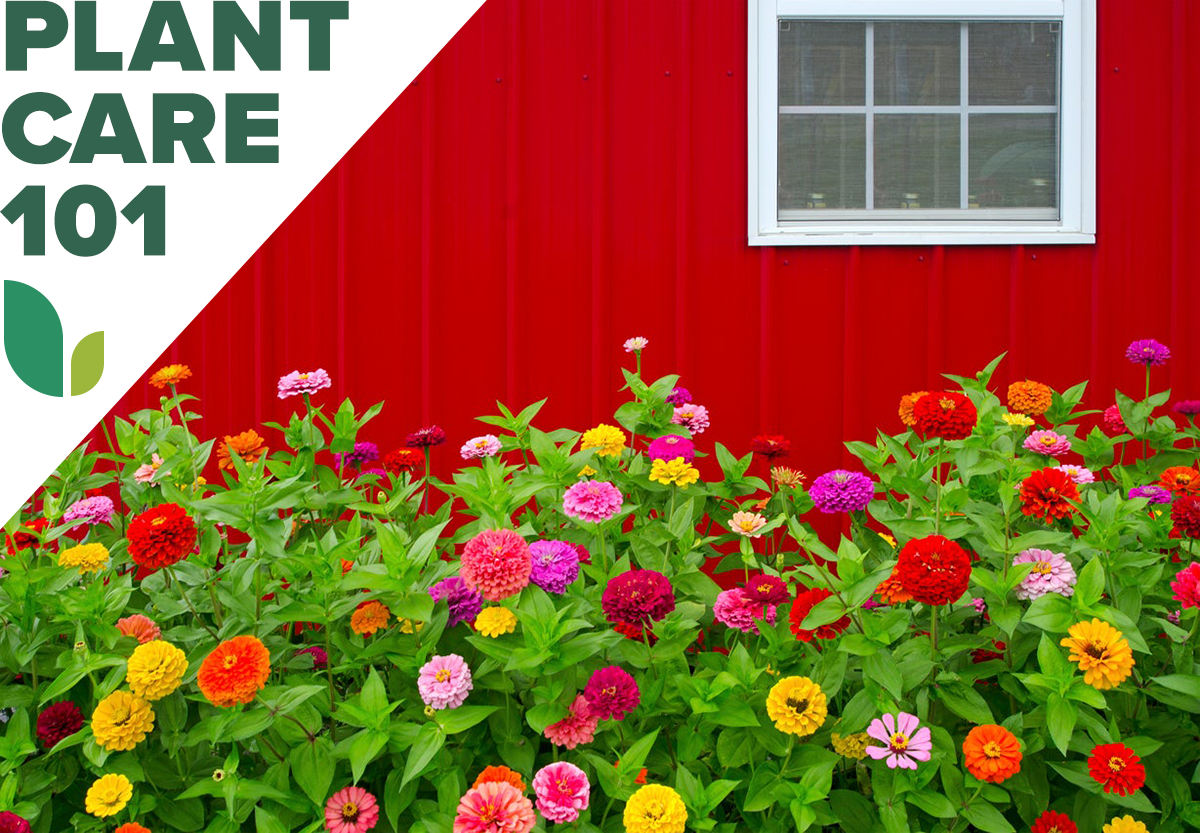

We may earn revenue from the products available on this page and participate in affiliate programs. Learn More ›
When it comes to pops of color in the garden bed, few flowers rival a hardy zinnia. Zinnias grow in a variety of colors and heights and love living in containers, making them the go-to summer annual for centuries.
Luckily, zinnia care is easier than you may think, and—with minimal effort—you will be rewarded with striking, long-lasting blooms that also make excellent cut flowers. This guide has the answers to questions you may have about how to grow zinnias.
RELATED: 15 Essentials for Beginner Plant Parents: What Every New Plant Owner Needs
Growing Zinnias at a Glance
Common Name: Zinnia
Scientific Name: Zinnia elegans, Zinnia spp.
Hardiness Zone: Annual in USDA zones 2 through 8, perennial in zones 9 through 11
Soil: Rich, well-draining soil; pH 5.5 to 7.5
Light: Full sun
Water: Regular water
Food: Fertilize throughout the growing season
Propagation: Seed
Safety: Nontoxic
Zinnia Characteristics
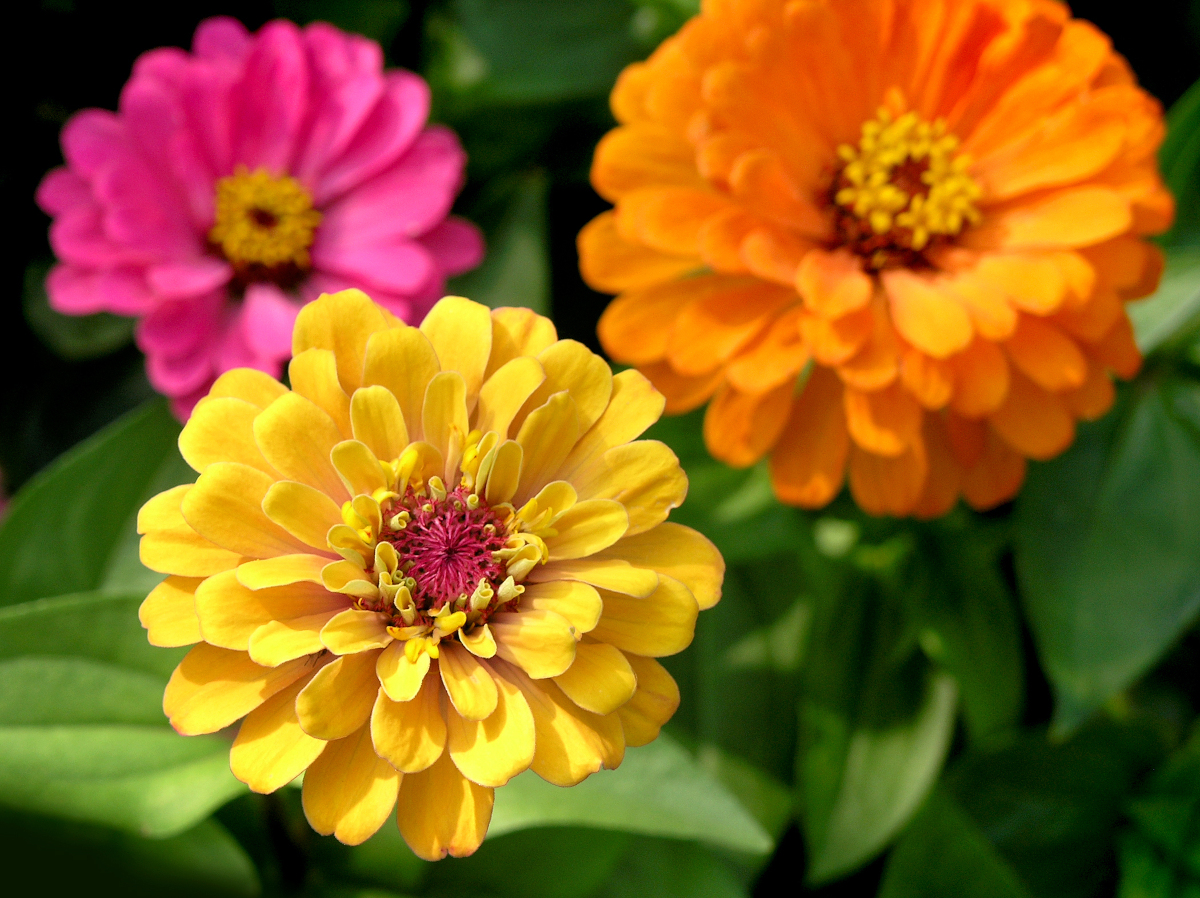
Most gardeners are familiar with the attractive annual zinnia variety Zinnia elegans. It’s easy to sprout from seed and grows prolifically in pots and garden beds alike. Hybrid colors range from snow white to pale green to delicate salmon; in fact, there are hybrids of Z. elegans in nearly every color of the rainbow! A stunning addition to any wildflower garden or window box, this species also comes in an array of flower forms, including single, semi-double, double, dahlia, globe, cactus, and even scabiosa, with the lattermost form named for its resemblance to the pincushion flower.
Other annual zinnia varieties are the compact Zinnia angustifolia and Z. haageana, or Mexican zinnia. The latter includes the Royal Horticultural Society’s award-winning cultivar ‘Aztec Orange’, which features gorgeous bright-orange double flowers. Another is Z. marylandica, a cross between Z. angustifolia and Z. elegans that is particularly mildew-tolerant, while Z. peruviana is native to the U.S. Southwest down through Argentina and sometimes called Z. pauciflora.
Perennial zinnia varieties include Zinnia grandiflora, otherwise referred to as prairie or Rocky Mountain zinnia, and Z. acerosa, also called desert zinnia. This low grower is native to the Rocky Mountains and Mexico and tolerant of colder winters in USDA zones 4 through 9. Meanwhile, Z. acerosa is native to Arizona, Texas, and Mexico. It is a ground cover with beautiful white flowers with yellow or sometimes purple florets at its center. These two native zinnias also attract hummingbirds, bees, and other pollinators in great numbers.
Recommended Zinnia Varieties
- White Wedding: Big 4-inch snow-white, double-dahlia blooms that last for weeks both in the garden and as cut flowers.
- Envy: An heirloom variety with beautiful bright-green flowers of about 3 inches. The double and semi-double flowers look stunning with delphiniums or other blue and purple flowers.
- Profusion Zinnia, Cherry Bicolor: Hybrid featuring 2-inch-wide white flowers with pretty pink and red accents.
- Lilliput Salmon: Smaller heirloom zinnias that can grow up to 24 inches tall with dozens of small pale-pink pom-pom flowers.
- Thumbelina Mix: Dwarf zinnia flowers in an array of colors, including pink, red, orange, and white. Growing only 4 to 6 inches tall, these flowers make an excellent filler for window boxes and small containers.
- Old Mexico: A pollinator-attracting cultivar of Z. haageana with a profusion of single red blooms tipped with orange and yellow.
- Sombrero: Another Z. haageana cultivar with bicolored red and gold blooms that does well in containers and attracts pollinators.
RELATED: Grow This, Not That: 12 Native Alternatives to Invasive Plants
Planting Zinnias
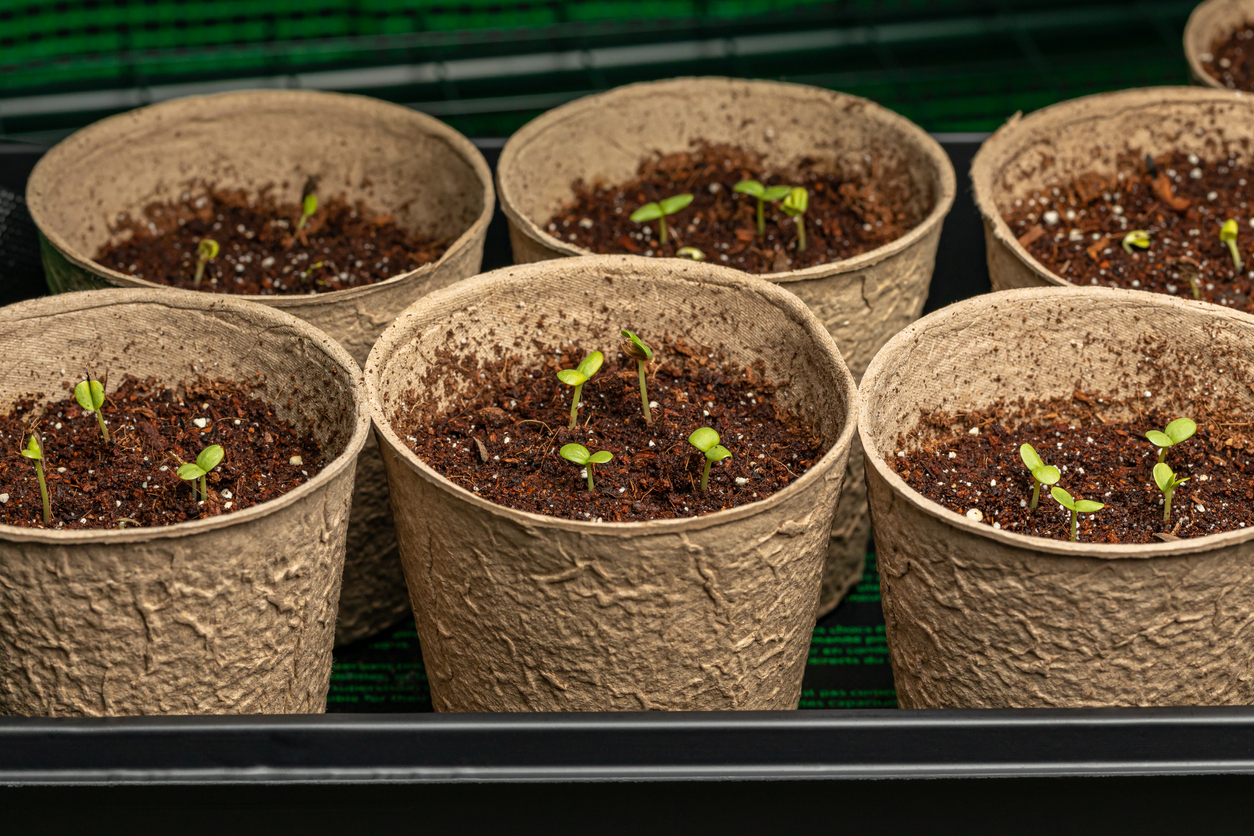
Zinnias are low-maintenance ground covers once established and capable of providing months of dynamic color to garden beds and pots. Plant several varieties together to get big splashes of color in your zinnia garden with little effort.
When is the best time to plant zinnias?
Plant zinnias in the spring once the danger of frost has passed and daytime temperatures reach at least 50 degrees Fahrenheit. In areas with warmer springs, sow seeds directly in the ground. In cooler climates, start seeds indoors 4 to 6 weeks before the expected last frost date.
Where can zinnias grow?
With a couple of exceptions, most zinnias are annual plants. Many are native to Mexico and the Southwest, so these flowers love heat. Plant them in a sunny spot in the garden where they’ll get at least 6 to 8 hours of sunlight a day. In areas with very hot summers, zinnias can tolerate partial sun. In areas with cool summers or fog, choose the sunniest possible spot, and avoid overhead watering of your growing zinnias to prevent powdery mildew formation.
How do you plant zinnias?
Zinnias can tolerate a variety of soil conditions and heat once established, but give them the best possible start.
If starting from seed indoors:
- Sow seeds indoors in a potting mix 4 to 6 weeks before your expected planting date (after the last frost).
- Keep the seeds in an area that maintains a temperature of at least 70 degrees Fahrenheit.
- Moisten the soil evenly.
- Harden off the seedlings when they’re 2 to 3 inches tall by setting the tray or pots outside for a few hours daily for about a week before planting them.
- Don’t let the zinnia sprouts get rootbound, which can cause stress and stunt growth and flower production.
- Add compost or a rich planting mix to the area in which you wish to plant zinnias.
- Plant according to the seed package suggestions. This can be anywhere from 3 inches to 2 feet apart, depending on the variety. Generally, aim for at least 8 to 9 inches of spacing to ensure the zinnias get adequate air circulation.
If planting starts purchased at a nursery: Follow steps 5 through 7 above. Try to not disturb the roots of any native zinnias when transplanting new plants.
If sowing zinnia seeds directly in the ground:
- Wait until the average daily temperature is above 50 degrees Fahrenheit.
- Add an enriching compost or planting mix to the area in which you are planting zinnia seeds.
- Place seeds ½ inch deep. Spread them out according to the seed package directions.
- Keep the soil moist.
- Once seedlings begin to sprout, thin them out to give them adequate space for growth.
- Wait a couple of weeks and then plant another round of seeds to extend the flowering season.
Can you grow zinnias in containers?
Zinnias grow very well in containers, as long as they are regularly watered and do not become too rootbound. Be sure to use a potting mix—not heavy garden soil—to ensure adequate drainage. Look for smaller containers for Thumbelina zinnias.
RELATED: 25 Easy-Care Plants That Survive With or Without You
Watering Zinnias

Although zinnias aren’t fussy overall, they are prone to powdery mildew, so water them with care. Soak the soil, not the plant. Give them regular water, watered at the soil level, and avoid overhead watering that gets leaves, stems, and flowers wet to avoid powdery mildew or sunburn. Also avoid overwatering zinnias, which can lead to wilting and rot. Note that native perennial varieties are extremely drought-tolerant once established.
Fertilizing Zinnias
Annual zinnias are considered heavy feeders. Give them plant food throughout the growing season; an all-purpose garden fertilizer works well, such as a 10-10-10. Apply it according to the directions on the fertilizer. Container plants may require more frequent fertilization. Consider fertilizing zinnias with a water-soluble plant food, but never apply it to dry soil.
Pruning Zinnias
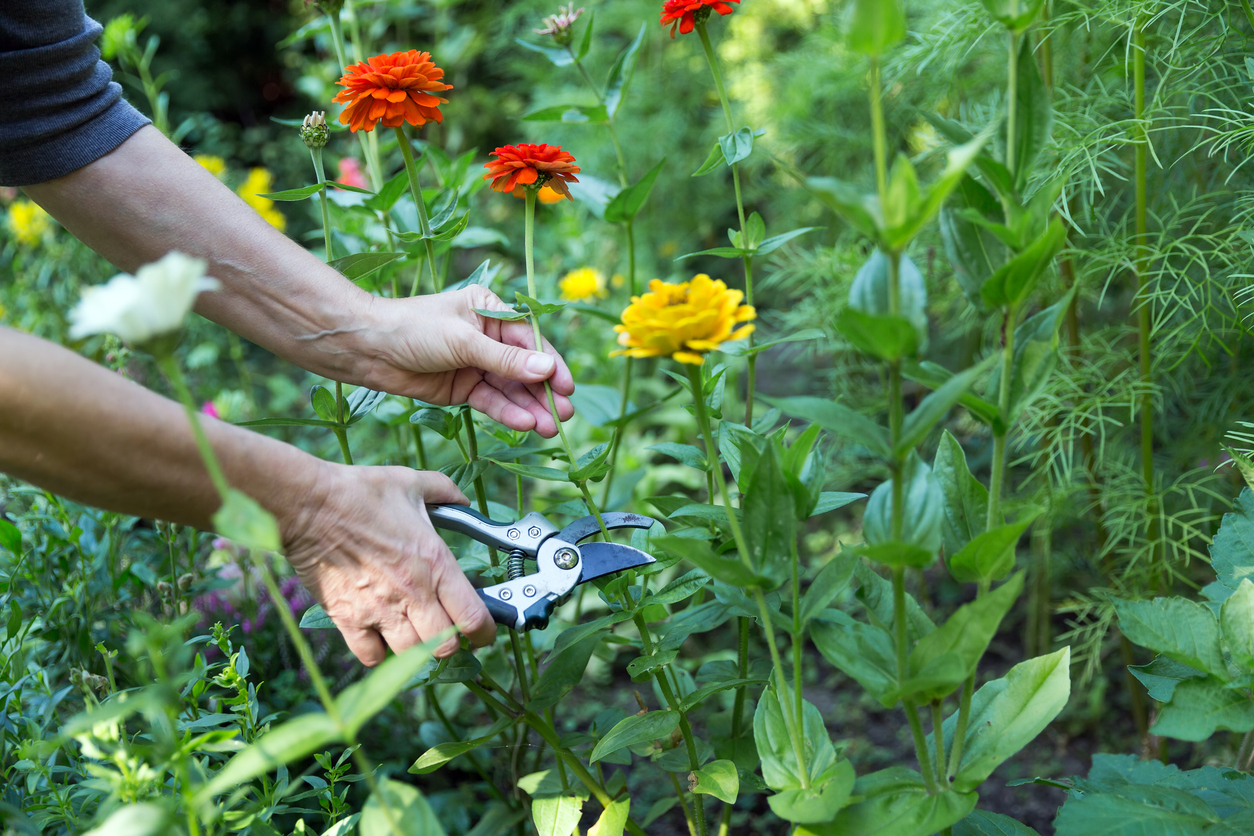
Zinnia flowers tend to last for weeks, and sometimes for months at a time. Deadhead zinnia flowers when they start to look faded, and handpick damaged leaves. Native zinnias (Z. acerosa and Z. grandiflora) reseed and spread, so they only require shearing of faded leaves to reappear in late spring.
RELATED: 14 Old-Fashioned Flowers That Still Look Great in Today’s Home Gardens
Propagating Zinnias
Zinnias can be propagated from seed and grown directly in the ground or indoors 4 to 6 weeks before planting. They are relatively easy to grow from seed, and you can gather seeds from faded flowers if you like. Just beware that many varieties will not bloom true to seed, so to ensure their exact color and appearance, you are better off buying a new seed packet of that variety each year.
Propagating a zinnia from a stem cutting is more like a clone of the plant, but it requires some work. Choose a stem that is not flowering but has several sets of leaves, making a diagonal cut just below the lowest set. Then, remove the lower leaves and submerge the stem in warm water out of direct sunlight. Regularly change the water, and expect roots in about a week. Plant the rooted stem in a container filled with sterile potting mix or directly in the ground.
Safety Considerations
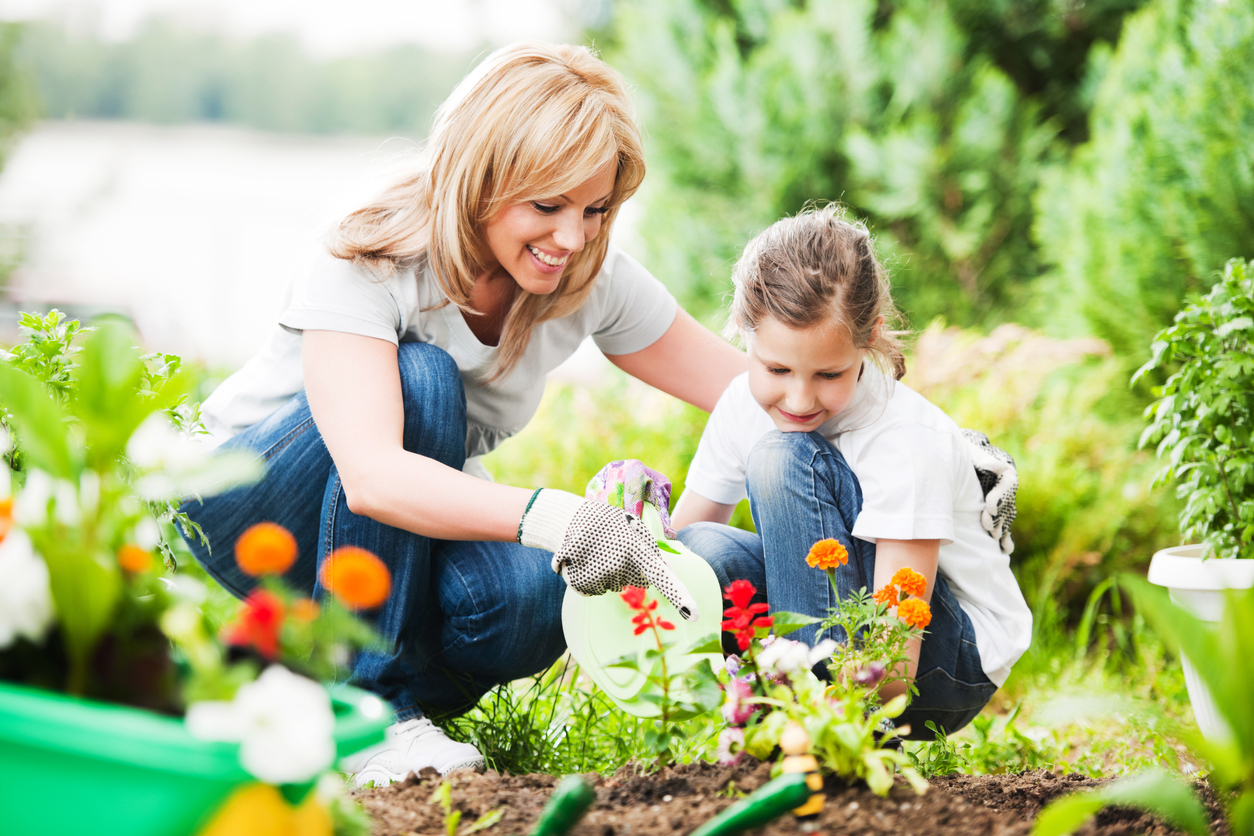
Zinnias are nontoxic to cats, dogs, and horses, as well as humans. Pollinators, including butterflies, bees, and hummingbirds, adore them.
Potential Pests and Diseases
Zinnias are prone to powdery mildew. To help prevent this, water only at the soil level and avoid getting leaves and stems wet. Do not water zinnias from overhead, and thin them as needed to give them air circulation. Occasionally, zinnias can be prone to leaf spot.
Overall, zinnias are resistant to many pests and diseases, but aphids, whiteflies, and spider mites will prey upon plants that may be stressed and under-watered during the hottest weather. Pay attention to watering on hot days to help prevent this stress. Hosing these pests off is usually enough to deter them. Zinnias are also deer- and rabbit-resistant.
Looking for more colorful flowers for garden beds and containers? Check out our guides on growing dahlia, hibiscus, and milkweed.
